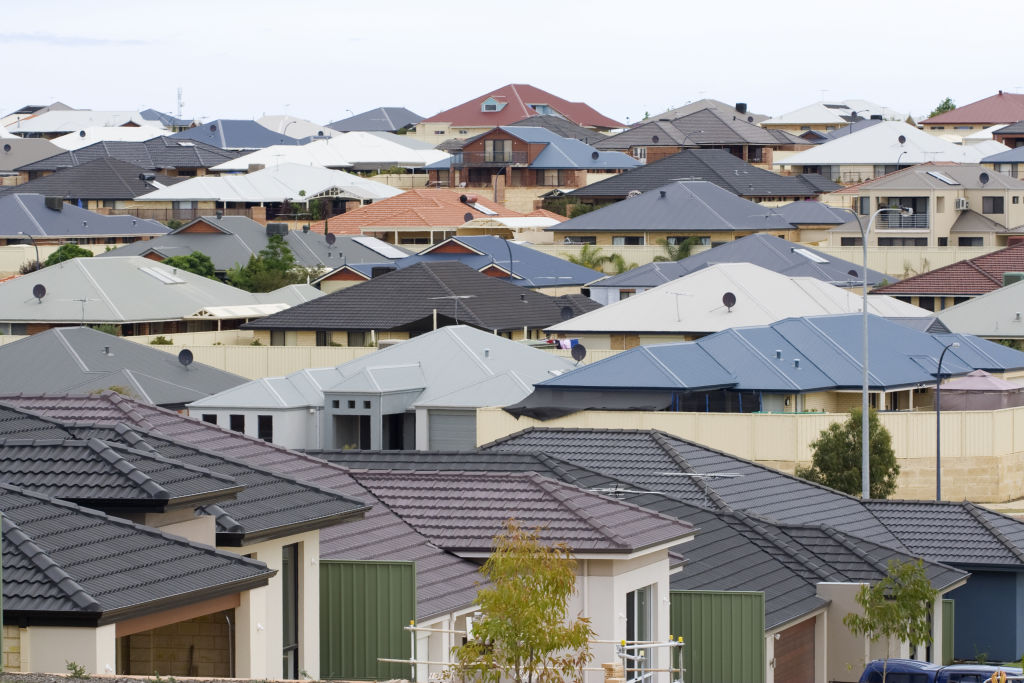What a lack of stock actually means for home owners

An already quiet time for the property market has been even quieter this year, with economic uncertainty and societal restrictions causing many would-be vendors to hold back.
It has meant even less choice for stock-starved buyers throughout the cooler months, which has helped support property prices.
Since the second half of last year, monthly listing volumes have been about 20-30 per cent lower in Sydney and 10-15 per cent lower in Melbourne than a year prior, according to Domain data.
But, the number of listings bounced back in June, as eased restrictions increased confidence.
It’s too early to tell whether this trend will continue, but it’s likely that a second round of lockdowns in Melbourne, while damaging to the local economy, will further reduce supply.
As spring approaches, restrictions ease and home owners who held off over autumn and winter get itchy feet, experts predict more properties will come on the market.
Prices and property sales
There’s historically been a strong relationship between property sales and prices, although it’s one that’s weakened in Sydney and Melbourne recently, Domain economist Trent Wiltshire says.
“Normally, prices and property sales follow each other pretty closely,” he says. “Often people will start selling when prices are rising as they look at the market and comparable properties, see that things have jumped and decide it’s a good time to sell.
“Conversely, when the market is softer people hold back. Obviously, COVID-19 has seen a big effect on the market. In Melbourne and Sydney, prices peaked in February and have fallen enough to discourage people from selling. The restrictions on selling and transacting are another barrier.”
Housing turnover is near record lows, and most capitals had modest price falls in the June quarter.
But worst-case scenarios haven’t come to fruition. Low supply and strong demand from buyers looking to take advantage of record low interest rates appear to have supported prices.
Financial support
Wiltshire says the low number of sales throughout recent months can be a good omen.
“The fact that there are few sales and few transactions are going on is actually a sign of the underlying strength of the market. It means there’s not people being forced to sell,” he says.
Banks have indicated extensions to repayment holidays will be available for some borrowers facing financial difficulty, so the likelihood of forced sales flooding the market has decreased.
“That’s what would push prices down in the future – if people lose their jobs and can’t pay their mortgage and have to sell their property.”
Upgrading in a downturn
Many home owners’ reasons to sell haven’t changed since March. Upsizing families still require more space or desire a home in a specific school catchment, while downsizers look to free up capital.
The lack of stock on the market should give potential vendors confidence to proceed, auctioneer Damien Cooley says.
“June and July would be the two quietest months for new properties coming onto the market, so our July and August auction volumes are always the two quietest months of the year,” he says. “Supply and demand says that if there’s less properties on the market and the same pool of buyers actively looking, properties should be selling well.
“Australians understand that interest rates remain at record lows. People are borrowing money with confidence on rates if they have confidence in their employment. People who have stable employment are certainly stepping out and buying real estate.”
Cooley expects a somewhat typical increase in listings throughout spring. Upgrading home-owners considering selling soon to beat the rush could find plenty to choose from.
“More properties come on the market in October and November,” he says. “I’d have no hesitation selling your property now and waiting for the right opportunity to buy.”
It may be tempting to wait for further falls before buying, or target suburbs where prices have fallen more than their own neighbourhood. But timing the market is notoriously difficult, and buying and selling in the same market mitigates the risk.
“You won’t be out of the market long enough to worry about what the market is doing,” he says.
We recommend
We thought you might like
States
Capital Cities
Capital Cities - Rentals
Popular Areas
Allhomes
More







